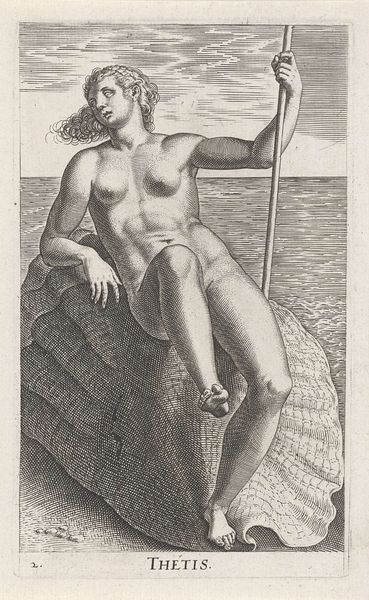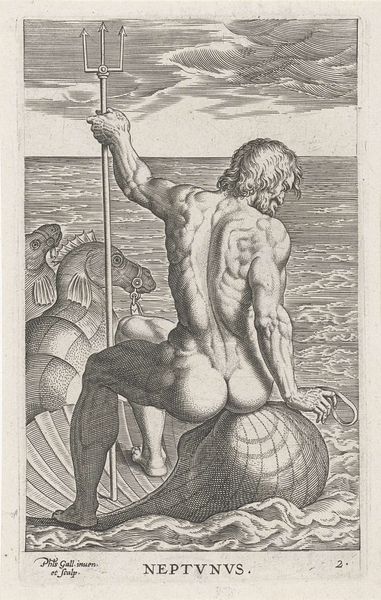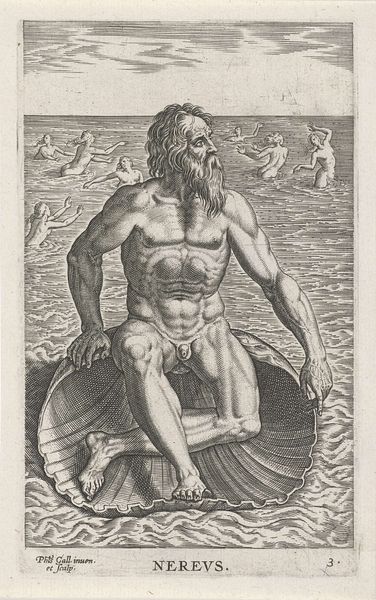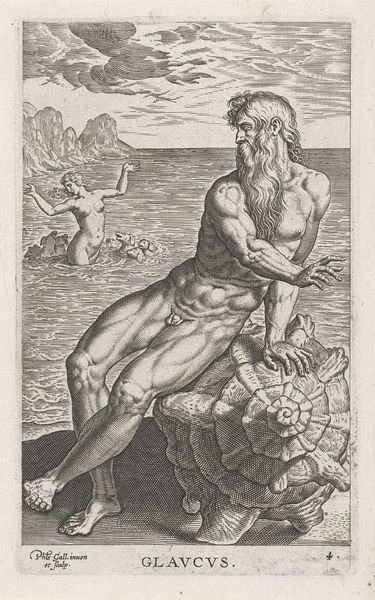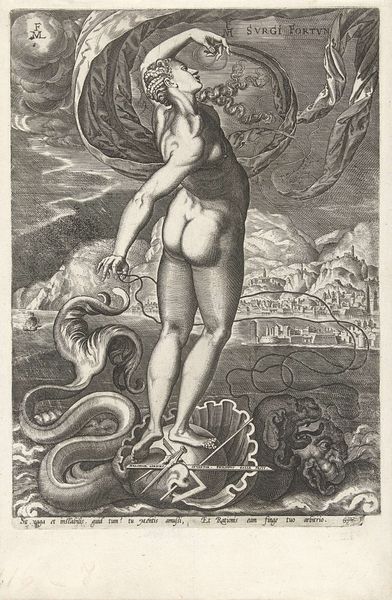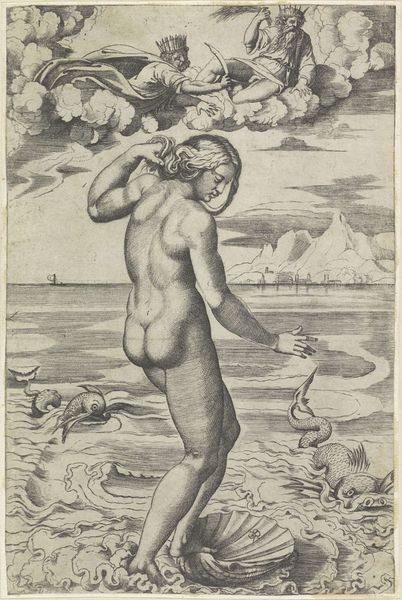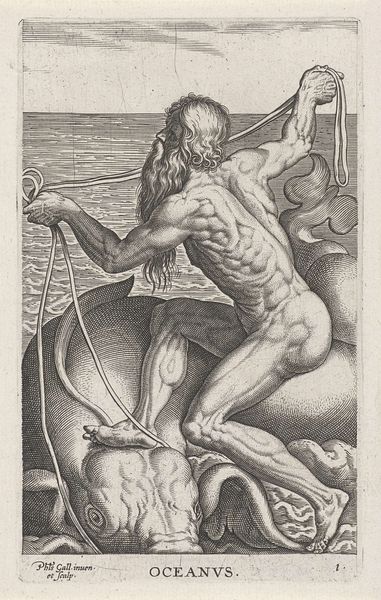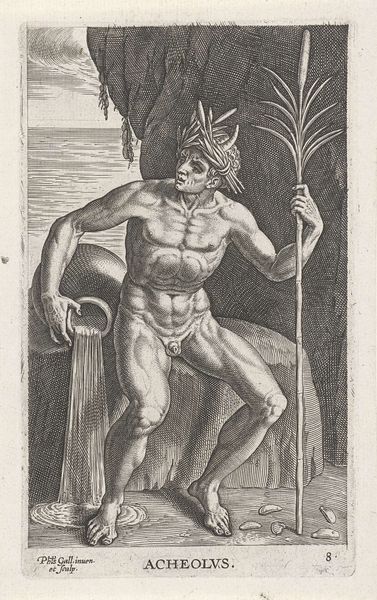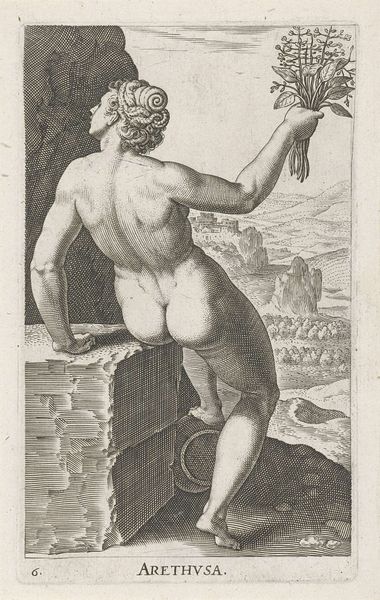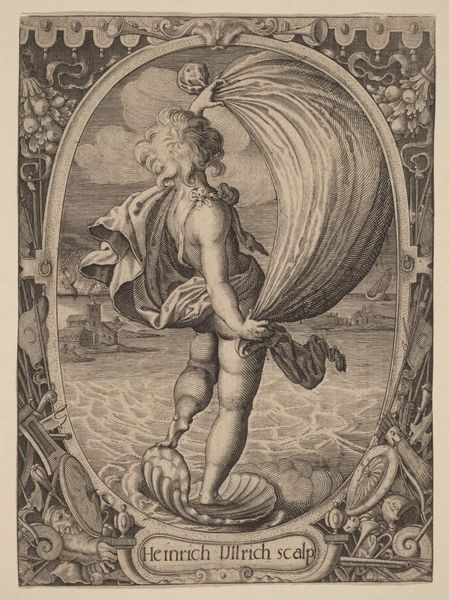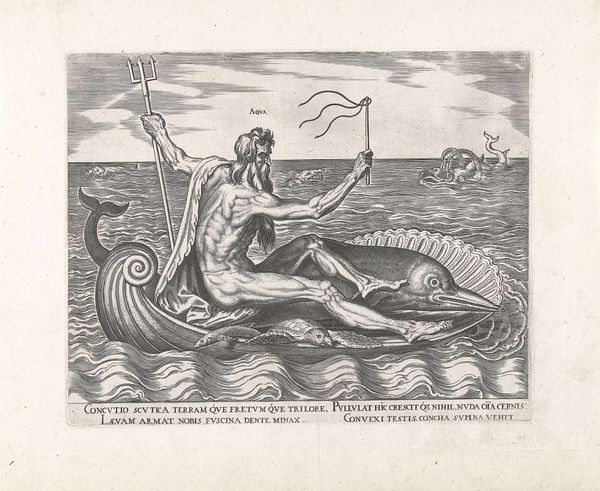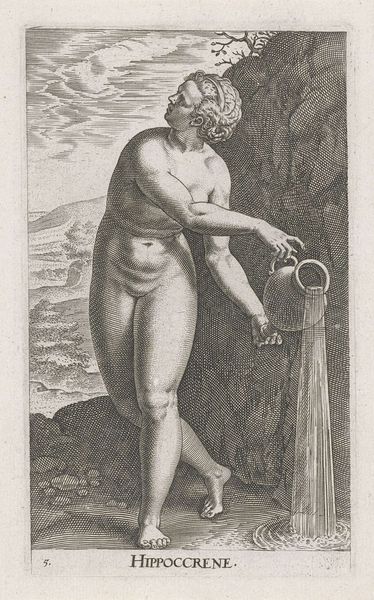
Dimensions: height 165 mm, width 101 mm
Copyright: Rijks Museum: Open Domain
Curator: Take a look at this engraving titled "Waternimf Galatea" by Philips Galle, created around 1587 and now housed in the Rijksmuseum. Editor: It strikes me as rather commanding. There’s a powerful presence conveyed through this figure – a sea nymph holding what looks like a trident, riding some sea creature. The line work seems precise, yet gives the form of Galatea real dynamism. Curator: Indeed. As an engraving, its creation relies on a skilled artisan carefully incising lines into a metal plate, inking it, and then pressing it onto paper. This reproduction process speaks to a developing print culture. These images circulated widely and were prized for their capacity to disseminate imagery and ideas on a mass scale, especially for viewers unable to visit paintings of the era. Editor: I’m immediately drawn to the figure of Galatea herself. She embodies a certain power, emphasized by the trident, a classical attribute of dominion over the sea. Notice also how she is emerging from a fantastical sea shell, evoking Venus emerging from her shell, while her foot rests upon the back of a bizarre looking dolphin or fishlike creature. These references suggest a conscious attempt to build upon a rich, mythological heritage. Curator: I agree, and if you observe closely the hatching and cross-hatching techniques Galle employed, you get a sense of how engravers achieved tonal gradations that gave these forms shape. Consider the paper it's printed on as well—its texture, its absorbency—these things impact the final image we see and give the artwork its enduring material presence. These materials also reveal the relationship between this unique artwork and similar engravings produced from the shop of Galle, often by artisans producing artworks using his particular workshop methods and conventions. Editor: It’s fascinating how these established symbolic forms intersect with the more overt message of Baroque sensibilities, and also of the Mannerist aesthetics—the emphasis on dynamic composition, stylized anatomy. These forms are really a compendium of cultural and aesthetic knowledge, aren't they? Curator: Exactly, but thinking materially about Galle's engraving broadens the discussion. He would have overseen apprentices, managed the copper plates. The final print shows us all of the decisions made across this hierarchy. It makes us consider what exactly makes a work "his". Editor: Considering these layers—the historical symbolism combined with your point about materiality and production, brings so much richness to understanding not just the image, but also its time. Curator: Precisely. Editor: Absolutely, and perhaps prompts further inquiry into the complex world it represents.
Comments
No comments
Be the first to comment and join the conversation on the ultimate creative platform.
